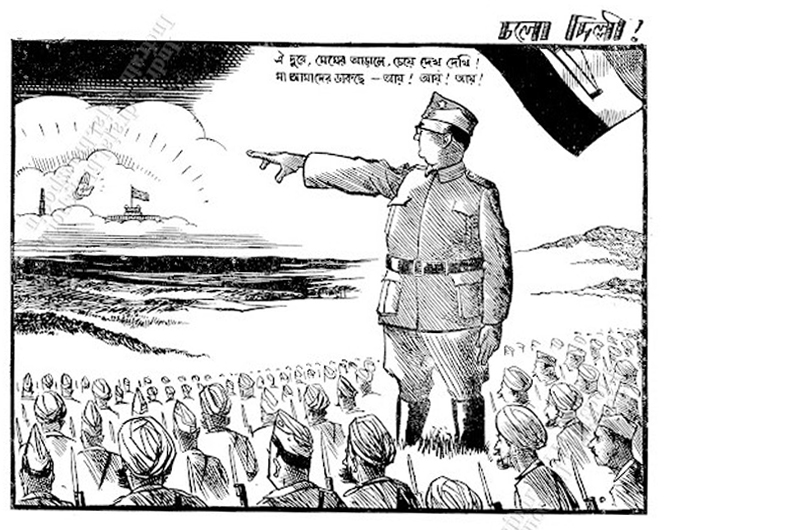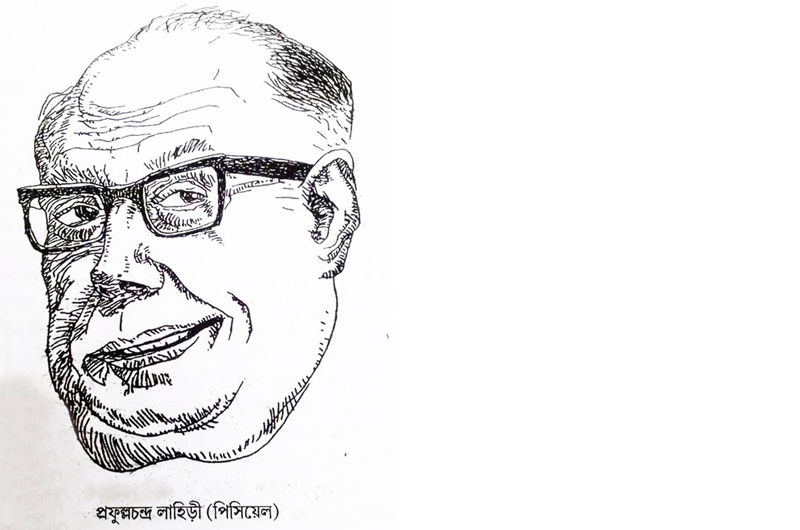Prafulla Chandra Lahiri, a towering figure in Indian political cartooning, drew cartoons in two languages and used two aliases – Piciel (for English cartoons) and Kafi Khan (for Bengali cartoons). He was the first editorial cartoonist of undivided Bengal. His incisive wit and artistic prowess captured the socio-political landscape of his times, offering both critique and commentary through his compelling illustrations. Mrinal Chatterjee pays a tribute on Lahiri’s 125th birth anniversary, reflecting on his enduring legacy and the indelible mark he left on Indian journalism and comic art
Prafulla Chandra Lahiri was born on 8th November 1900 in Dhaka, the capital city of present-day Bangladesh. He was good in drawing and sketching from childhood. After completing his master’s degree in History, he served as a lecturer at Feni College in Noakhali (present-day Bangladesh) and that was when his first cartoon was published in Sanibarer Chithi, a well-known Bengali periodical. It was much appreciated by the editor of the magazine. Sajanikanta Das.
In 1933, Lahiri he chose to leave academia to pursue his passion for art in Calcutta. The bold transition was marked by initial struggles, but his perseverance bore fruit when he secured a position at Amrita Bazar Patrika, a popular English daily in 1936. He worked there for more than three decades. He also contributed regularly to the Bengali daily, Jugantar, where his work resonated deeply with readers, cementing his reputation as a household name in Bengal. He created several memorable cartoon characters like Khudo (Uncle), a mustachioed old man.

Jugantar, where his work resonated deeply with readers, cementing his reputation as a household name in Bengal.
Lahiri’s cartoons were characterised by a fearless portrayal of political figures and events. He did not shy away from depicting prominent leaders like Mahatma Gandhi, Muhammad Ali Jinnah and Subhas Chandra Bose, capturing their personas with bold drawings and biting satire. He could draw cartoons that reflected the mood of the society. One particularly notable cartoon, published the morning after Gandhiji’s assassination, poignantly captured the varied reactions of different communities and international bodies, showcasing Lahiri’s acute awareness of the socio-political fabric of the time.
Lahiri’s satirical lens extended beyond national boundaries, encompassing international figures like Winston Churchill, Franklin D. Roosevelt, Adolf Hitler and Benito Mussolini. Through his art, he provided insightful commentary on global politics, often highlighting the absurdities and contradictions inherent in the actions of these leaders. His ability to distil complex political scenarios into a single frame, laden with humour and critique, set him apart as a master cartoonist.
One of Lahiri’s acclaimed works, Europer saajghor (The dressing room of Europe), exemplifies his genius. In this cartoon, he adeptly transforms a single figure from Mussolini to Hitler with just a few strokes, underscoring the interchangeable nature of dictatorial regimes. Such cartoons not only entertained but also provoked thought, encouraging viewers to question and analyse the world around them.
Beyond his individual creations, Lahiri played a pivotal role in shaping the landscape of Bengali cartooning and comic art. He was the first artist to use cartoons and caricatures in advertisements in India. He created cartoons for different products such as hair oil, powdered spices, even cigarettes. His work inspired a generation of cartoonists who followed in his footsteps.

This year marks his 125th birth anniversary.
Lahiri was an innovative person. He was interested in film animation but technology wasn’t up to it at the time, not even in Bombay. So he made a series of flipbooks called Kafiscope – for example, Fishbook, Long and Short, Jumbo Boy. He wrote and drew illustrations for several children’s books. He passed away on 27th October 1975.
Recently, all of Lahiri’s works have been published in two volumes by Kolkata-based Lalmati Prakashan. A collection of his cartoons on Gandhiji and Subhas Bose were compiled and published in book form in 2022. Despite the passage of time, Lahiri’s work remains relevant. His cartoons serve as historical documents, offering insights into the political climate of his era. They also remind us of the power of art as a tool for critique and reflection. In an age where visual media continues to shape public discourse, Lahiri’s legacy underscores the importance of thoughtful and courageous artistic expression, with a liberal dose of laughter.
(A journalist-turned media academician, the writer works as professor and regional director of the Indian Institute of Mass Communication, Dhenkanal, Odisha. He is presently writing a book on the comic art of India.)



 from Webdoux
from Webdoux